What is a Health Savings Account (HSA)?
A Health Savings Account (HSA) is a great way to help you control your healthcare costs. It works in conjunction with a qualified High Deductible Health Plan (HDHP) to combine tax-free savings earmarked for qualified medical expenses.
An HSA allows you to set aside money to pay for higher deductibles associated with a lower monthly premium HDHP. The money you save in monthly insurance premiums is reserved for eligible medical expenses you incur in the future.
Eligible expenses include things like co-pays and deductibles, prescriptions, vision expenses, dental care, therapy and medical supplies.
Highlights
- Balances roll over from year to year and earn interest along the way.
- Portable – you keep it even after you leave employment.
- Tax advantages – invest money in mutual funds to grow your tax savings for either future healthcare costs or retirement.
- Pay for expenses with a benefits debit card that gives you immediate access to your money at the time of purchase.
- Expenses also can be reimbursed through our online portal, online bill pay directly to your provider or submitting a distribution request form.
- Receipts are not required for reimbursement, but be sure to save them for tax purposes.
HSA Benefits Card
The benefits card is available to all employees who participate in a Health Savings Account (HSA). The benefits card gives you immediate access to your money at the point of purchase. Cards are available for participating employees, their spouse and eligible dependents who are at least 18 years old. Funds are not loaded upfront; they become available as contributions are made to your account. Remember to keep records and/or receipts that show HSA distributions were used to either pay for or reimburse qualified medical expenses.
HSA VIDEO
Educational Employees Credit Union (EECU)
Ph: (817) 882-0800
Minimum Health Insurance Plan Deductible Amounts for the Qualifying HDHP
- 2024
- Individual Coverage
- Family Coverage
- 2024
- $1,600
- $3,200
- 2025
- $1,650
- $3,300
Annual Maximum Contribution Levels
- 2024
- Individual Coverage
- Family Coverage
- 2024
- $4,150
- $8,300
- 2025
- $4,300
- $8,550
Catch up allowed for those 55 and over – $1,000


